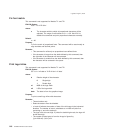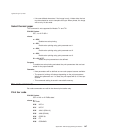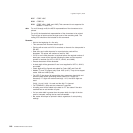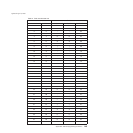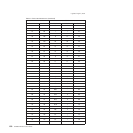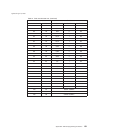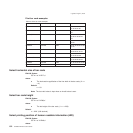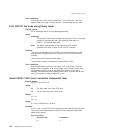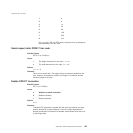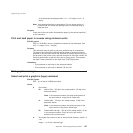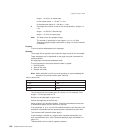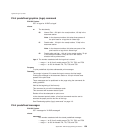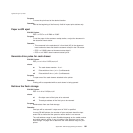Error Conditions:
If an image can not be printed, status byte 7, bit 2 will be set. This may
happen when the image is too big to print. Try decreasing the ECC level.
Print PDF417 bar code using binary mode
EIA-232 Syntax:
GS U datalength data or X'1D;55;datalength;data;00'
where:
datalength
The number of data bytes to follow the bytecount. This is a two-byte
variable to accommodate the 1000 maximum data bytes, i.e.
X'0200' = 512 decimal data bytes.
data The ASCII representation of the characters to be printed.
Characters can have a value of X'00' to X'FF' inclusive.
Remarks:
This command encodes data into PDF417 bar codes using binary mode.
Valid only at the beginning of a line. Printing will not start until all data is
received.
This command will increment status byte 6.
The maximum number of characters to be encoded is 1000.
Error Conditions:
If the encoder detects an error, status byte 7, bit 2 will be set. This may
happen when the amount of data is too large to be encoded. In this case,
try decreasing the ECC level or decreasing the amount of data to be
encoded. An unsolicited status message will be sent. (A status will be sent
even if the system is ready to receive it or not.)
Select PDF417 ECC (error correction codewords) level
EIA-232 Syntax:
GS R n or X'1D;52;n1;n2'
where:
n1 The high-order byte of the ECC level.
n2 The low-order byte of the ECC level.
Default:
n1=00
n2=15
Range:
0 ≤ n1n2 ≤ 400 decimal (170 hex)
Remarks:
For 0 ≤ n1n2 ≤ 8, the ECC level is assumed as that particular security level.
The security level determines the number of error correction codewords
added to the symbol.
Error Correction
Security Level Codewords
0 0
Updated April 2, 2009
154 SureMark Printers User’s Guide



